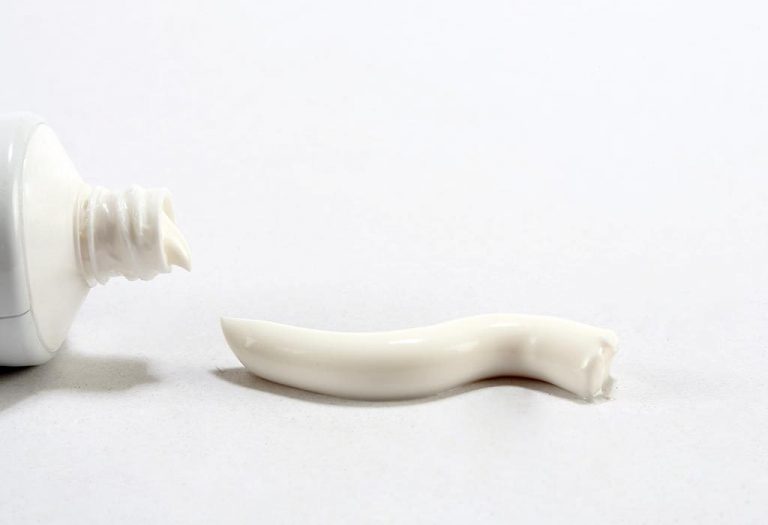Birth Control Implant (Contraceptive Implant) – Benefits, Side Effects & Cost

The methods to prevent pregnancy range from a wide variety of external ones, such as condoms, oral pills, such as birth control or the morning-after pill, as well as internal non-surgical procedures, such as using an intra-uterine device. Many of these generally have a limited lifespan or require you to remember taking the pills on time at the right frequency. Of late, there has been quite some activity around birth control contraceptive implants that are not only convenient to install and remove, but do tend to last longer and are termed as a highly effective method of birth control, that can be easily reversed, too.
What Is a Birth Control Implant?
A birth control implant can be described in the simplest terms as a convenient way of birth control using hormones (1). This implant, when installed in the body, starts releasing the hormone progestin at regular intervals, which stops the pregnancy from taking place.
The birth control implant is no larger than a matchstick and is made out of plastic. It is usually inserted under the skin of the upper arm, where it sits and releases hormones into the blood. This implant is quite effective in preventing pregnancy, with a 99.95% success rate.
How Does a Birth Control Implant Work?
Once the implant is installed within the body, it begins working by releasing a hormone into the woman’s bloodstream. This is a progestin based hormone termed as etonogestrel. What it does is it reaches the ovaries and blocks the eggs from releasing into the next stages. At the same time, it kicks in bodily processes that work towards thickening the mucus in the cervical region. This helps block any sperms from swimming towards the uterus (2). These measures in combination work in preventing pregnancy from taking place.
How Soon Does a Contraceptive Implant Start Working?
The working of the implant depends on when it is installed in the woman’s body. If the installation takes place in the midst of the five days of your menstrual cycle, then it pretty much goes into action right off the bat. In case of installation at any other point of time, the implant could take up to a week to be effective, which makes it necessary to use alternative birth control options until then (3).
How Effective Is a Birth Control Implant?
With a 99.95% per cent efficacy, in terms of numbers, more than 99 out of 100 women will successfully prevent their pregnancy by using this (4). The hormones are released regularly at the right dosage, at the right time, without any need of external interaction. This rules out the possibilities of human error significantly.
Who Can Use a Birth Control Implant?
Most women from all walks of life can opt for a contraceptive implant. The implant, however, is usually not recommended to women who (5):
- Suffer from a medical condition that could affect the implant
- Suffer from breast cancer or have a history of it
- Suffer from diseases of the liver, heart or have had a stroke
- Usually, notice erratic bleeding after intercourse or in the midst of a menstrual cycle
- Are on medication that could counteract the implant’s functioning
- Prefer not disturbing their menstrual cycle or might already be pregnant
How Can You Get the Implant?
A woman can get a contraceptive implant installed in numerous ways. There might be various contraception clinics in your city that could help you out with it. Your own doctor might be able to recommend a few places that can carry out the procedure well, or do it himself if he is a surgeon as well.
What Happens Before Inserting the Implant
One of the key processes that are undertaken before proceeding ahead with the implant insertion is to check the woman’s health status and determine an appropriate time for installing the contraceptive. This depends on the menstrual cycle as well as any existing contraceptive methods. A pregnancy test is also undertaken along with it.
Usually, alternative methods of contraception are not advised to women who get the implant installed during their periods, or use non-hormonal contraceptive methods or replace their existing contraceptive device with the implant on the same day itself.
How Is the Implant Inserted?
The entire procedure is rather simple. The arm is numbed by administering a local anaesthetic. Then, the implant is gently installed under the skin of the arm within a couple of minutes. The pain felt is no worse than a prick of an injection. No incisions are required once the installation is complete (6).
What Happens During the Procedure
Here are some things that you can expect during the procedure.
- Before beginning, the doctor will advise you to lie down on your back. The arm that would have the implant needs to be placed above your head by bending near the elbow.
- The ideal location for placing the implant is the small location between the triceps and the biceps, located on the inner side.
- A local anaesthetic is injected and, after a few minutes, the implant is installed just below the skin, so as to facilitate its removal.
What Happens After the Procedure
Here are the after-procedure steps.
- Once the implant has been successfully installed and the anaesthetic wears off, your doctor will gently press around the area and ask you if you can feel the implant’s presence. You can do the same with your other hand as well.
- In case of any doubts, a quick ultrasound or an X-ray might be conducted to check if the implant has, in fact, been placed in the right way.
- The area of injection is covered with a small bandage. This can be taken off in a day or so but it is usually recommended to keep it there for a few more days and cleaned regularly.
- At times, a little irritation or bleeding might occur in that area and you can contact your doctor if it gets worse.
Benefits of Using Birth Control Implant
Compared to a number of birth control methods out there, using a contraceptive implant is one of the best contraceptive methods one can opt for (7).
1. Highest Efficiency
The success rate of preventing pregnancy by use of this contraceptive implant is above 99%. This is one of the few methods of contraception that is so successful. It also removes the necessity of remembering to take pills or any external intervention, pretty much automate the entire process with zero hassles.
2. Long-lasting
Once a contraceptive implant is installed, it can provide its functionality for as long as three years or so. This makes it extremely cost-effective and convenient for many women who can get it installed and be carefree for the next few years.
3. Instant Return of Fertility
If it any point of time, you decide to try and get pregnant, there is no need for any waiting time for this. The implant can be removed with a simple procedure and your fertility pretty much bounces back to normal within no time.
4. A Safe Method of Contraception
Not all women find estrogen-based contraceptives suitable for them but they do want an effective way to prevent pregnancy, too. This implant is the best for such women since it doesn’t contain estrogen-based hormones at all.
5. Reduced Menstrual Bleeding and Cramps
Many women experience lighter periods or even the absence of menstruation while using the birth control implant. This can be especially beneficial for those who suffer from heavy bleeding, painful cramps, or conditions like endometriosis.
6. Discreet and Low-Maintenance
Unlike pills or condoms, the implant is hidden under the skin and requires no daily attention. There’s no need to carry or store anything, making it a private and hassle-free option for long-term contraception.
Side Effects and Risks of Contraceptive Implant
As with any kind of contraceptive measure, there are a few side effects but also a few risks that you expose yourself to on getting the implant installed. The general ones are usually irregular bleeding as the menstrual cycle undergoes a change. But there are a few other birth control implant side effects and risks as well.
- After the installation, there is a possibility of the injected site getting an infection and result in the formation of pus or bleeding.
- The implant can move from its position and might require intervention to correct it.
- There are chances of contraceptive implant weight gain in certain women.
- Some chances of experiencing headaches accompanied by nausea.
- In rare cases, there might be a pain in the breasts as well as cysts in the ovaries.
Is a Regular Checkup Essential Once You Have an Implant?
Absolutely not. Unless you experience side effects or any signs of risks or need the implant to be removed or replaced, you can continue to lead your life just as you do, without the need to undergo check-ups around it.
When Should You Get the Implant Removed?
For women wondering how long does the contraceptive implant last, it usually ranges somewhere from between 3-4 years. Your doctor can help you understand when you need to come in to check for its utility. If a woman is attempting to get pregnant, she needs to get her implant removed before she goes ahead with it. The implant also needs to be removed if it has crossed its usage period of 3-4 years. This can then be replaced with another implant, or you can switch to a different method of birth control.
What to Expect After the Implant Is Removed
Once your implant is removed, the arm might hurt a bit and be a little swollen. Nevertheless, that will go away in some time. And if you’re looking to get pregnant, you can get started right away.
How Is the Implant Taken Out?
Once the implant has completed its lifecycle or you wish to get pregnant, you need to visit your doctor or the place you got the implant from, and undergo a procedure for its removal, which is just as simple as the installation.
- Just as before, you will need to lie down and arrange your hand accordingly. A local anaesthetic will once again be injected to numb your arm.
- After a few minutes, a small cut is made in the area where the implant is located and it is externally pushed to be visible from the cut. This is then pulled out from the skin by means of medical forceps.
- If you need to continue with the same method, a new implant can be inserted right then and there at the same location.
- Thereafter, the cut is closed, a bandage is applied, and all of this is done and dusted in less than 10 minutes.
Is There Anything That Makes the Implant Less Effective?
Many women wonder do antibiotics affect birth control implant or its ability to prevent pregnancy. And there is some truth behind it. Although most antibiotics generally don’t cause a problem, the ones based on rifabutin or rifampicin have known to interfere with the implant’s functioning. Other herbal remedies or even medication for HIV, epilepsy or respiratory disorders could reduce the efficacy of the implant. Your doctor can help you understand this better based on your medications.
Who Should Not Have a Birth Control Implant
Using these contraceptive implants is generally forbidden for women who suffer from or have shown signs of the following conditions.
- Allergy to the implant material
- Possibility or history of breast cancer
- Presence of blood clots in the body
- Tumours in the liver
- Depression and mood disorders
- Diabetes or hypertension
How Can You Change From Other Birth Control Methods?
Switching over from your existing contraceptive method to start using the implant is not a big deal. Some of them could be done instantly, while some might require a cool-down period before introducing the implant in your body.
1. Changing to the Implant From the Combined Pill
If you are already using a combination pill to prevent pregnancy, the implant can be installed anytime within the first seven days of the period when you are hormone-free and you can stop any other methods right away.
2. Changing to the Implant From the Progestogen-only Pill
While on a progesterone pill and nothing else, you can proceed ahead with the installation of the implant while you are on the pill. Once it is successfully installed, you need not take any other contraceptives.
3. Changing to the Implant From the Intrauterine Contraceptive Device
For women who have an IUD placed already inside their body, it is best to allot the same day to remove the device and install the implant in your body right away, requiring no need of backup contraception as such.
4. Changing to the Implant From an Injectable Contraceptive
If you usually opt for a contraceptive that is injected in your body, then it is necessary to wait for your next due date of the injection and get the implant installed on that date instead of taking the injection.
5. Change to the Implant From a Non-hormonal Method
Women on non-hormonal contraceptive methods usually require no additional measures and can get the implant inserted and be pregnancy-free right away.
6. Changing to the Implant From the Progestogen Intrauterine System
Just like any other intrauterine device, it works to your benefit to replace the device with the implant on the same day itself, for absolute convenience.
What Is the Cost of the Contraceptive Implant?
What’s the contraceptive implant price? On a general basis, the implant along with the procedure to install it can range anywhere from 15,000 to more than a lakh rupees at a go. There is a possibility that certain insurance plans or medical health policies might cover the usage and installation of contraceptive procedures. It is best to get in touch with your organization or your medical policy company to get a better understanding of this. Even though it might seem expensive on the outset, the cost-effectiveness and the convenience that follows with great efficacy, are rarely provided by any other contraception technique.
When to Consult the Doctor
If you have an arm implant birth control, contact your healthcare provider if you experience any of the following (8):
- Possible Pregnancy – Missed periods or pregnancy symptoms like nausea and breast tenderness.
- Abnormal Vaginal Discharge – Unusual color, odor, or consistency.
- Severe Headaches – Persistent or worsening migraines.
- Signs of Infection – Fever, chills, or pus/redness at the insertion site.
- Implant Issues – The implant moves, falls out, or cannot be felt under the skin.
- Heavy or Prolonged Bleeding – Excessive or non-stop vaginal bleeding.
- Pain or Discomfort – Persistent pelvic/abdominal pain or pain during intercourse.
- Liver Problems – Yellowing of the skin or eyes (jaundice).
- Blood Clot Symptoms – Leg pain, chest pain, shortness of breath, weakness, numbness, slurred speech, or vision changes.
FAQs
1. Does the implant protect against STDs or STIs?
The implant is located in the woman’s arm, and it releases hormones that work on the ovaries and the cervix, preventing the contact of sperms and eggs from taking place. This functionality is quite different from using male or female condoms, which prevent any skin-to-skin contact or fluid exchange between the partners. Therefore, the chances of contracting STDs or STIs are higher out here, and it is always recommended to use additional protection, especially during intercourse with unknown partners.
2. How soon can you get pregnant after getting the implant taken out?
The hormones that are released in the body are present within the implant itself. The moment the implant is removed from your arm, the release of hormones stops as well and the fertility of your body returns back to normalcy almost instantly. Therefore, such a contraceptive implant provides a large degree of control over your pregnancy since you can literally remove the implant and proceed to start getting pregnant almost instantly.
3. Can a birth control implant affect breastfeeding?
While the implant is generally considered safe for nursing mothers, small amounts of hormones may pass into breast milk. Most studies show no significant impact on milk supply or infant health, but consult your doctor if you have concerns.
4. Can I get an MRI or X-ray with the implant?
Yes, the implant does not interfere with most medical imaging. However, inform the technician about its location (usually in your arm) to avoid rare displacement risks during an MRI.
The progress in medical sciences and the various aspects of health have made numerous contraceptive methods a possibility for women all over the world. Although oral contraceptives and the pills might be inexpensive and opted by many, a one-time cost for an implant that poses the lowest risks along with the highest efficiency can be quite a choice for a lot of women. By taking the right precautions and undergoing the tests to rule out the possibilities of any complications, you can enjoy the benefits of a contraceptive implant from the get-go.
References/Resources:
1. NHS – What is the contraceptive implant?
2. Planned Parenthood – Birth Control Implant
3. Sexual Health Victoria – Contraceptive Implant
4. NHS Inform – Contraceptive implant
5. Cleveland Clinic – Contraceptive Implant
6. Mayo Clinic – Contraceptive implant
7. Better Health Channel – Contraception – implants
8. Nemours Kids Health – Birth Control: Implantable Contraception
Also Read:
Oral Contraceptive Pills
Ways to Calculate Safe Period to Avoid Pregnancy
How to Use a Birth Control Patch to Avoid Pregnancy
Emergency Contraception Methods to Try
Diaphragm Contraceptive – A Birth Control Method
Was This Article Helpful?
Parenting is a huge responsibility, for you as a caregiver, but also for us as a parenting content platform. We understand that and take our responsibility of creating credible content seriously. FirstCry Parenting articles are written and published only after extensive research using factually sound references to deliver quality content that is accurate, validated by experts, and completely reliable. To understand how we go about creating content that is credible, read our editorial policy here.



























